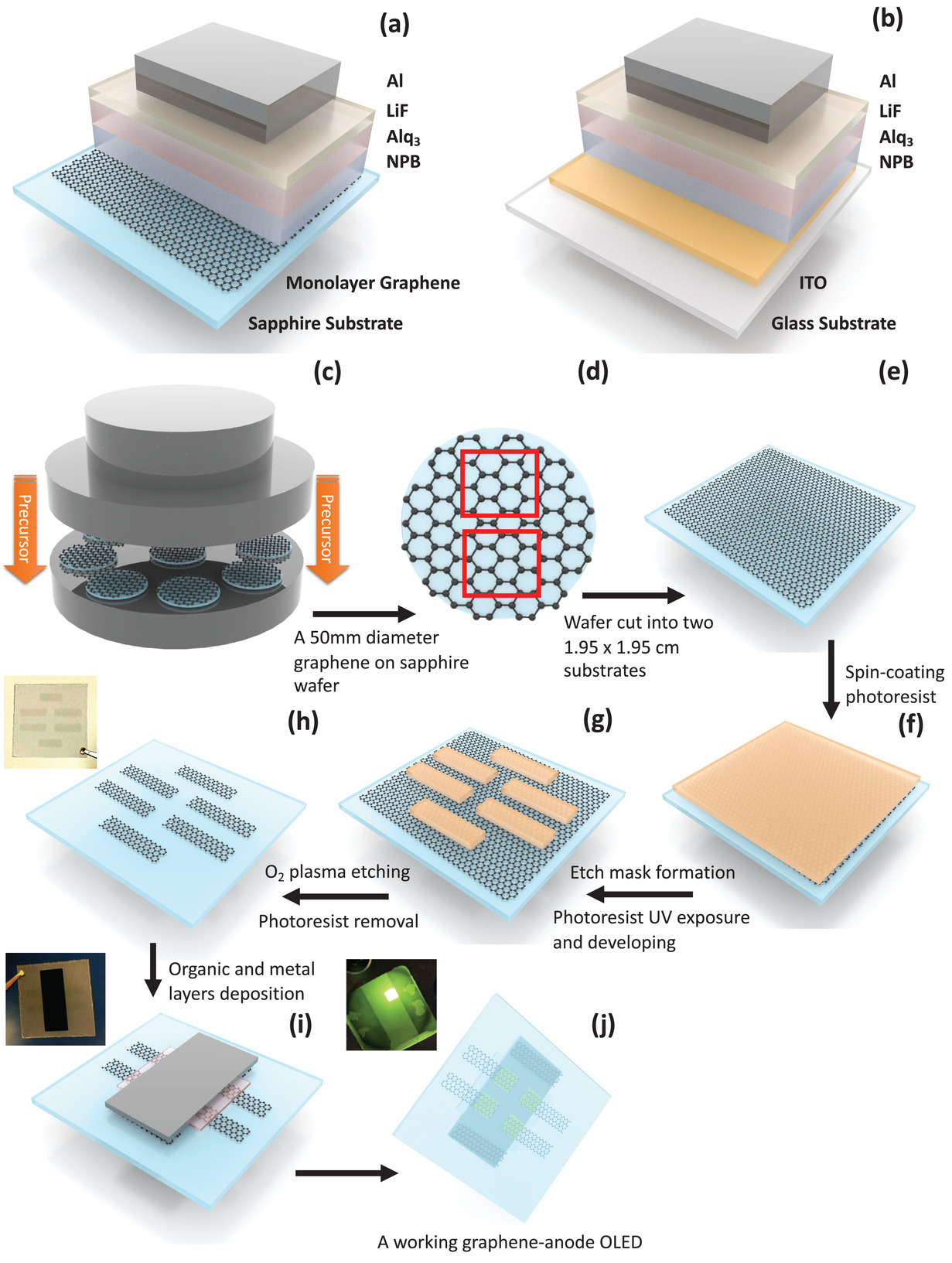博文
石墨烯可替代手机屏幕中使用的稀有金属
 精选
精选
||
石墨烯可替代手机屏幕中使用的稀有金属
诸平

据英国伦敦玛丽女王大学(Queen Mary University of London)网站2022年1月6日报道,来自Paragraf和伦敦玛丽女王大学的研究人员,展示了成功制造具有单层石墨烯阳极的有机发光二极管 (Organic Light-Emitting Diode简称OLED),以取代有机发光二极管中的氧化铟锡(indium tin oxide简称ITO)。相关研究结果于2021年12月20日已经在《先进光学材料》(Advanced Optical Materials)杂志网站发表——Zhichao Weng, Sebastian C. Dixon, Lok Yi Lee, Colin J. Humphreys, Ivor Guiney, Oliver Fenwick, William P. Gillin. Wafer-Scale Graphene Anodes Replace Indium Tin Oxide in Organic Light-Emitting Diodes. Advanced Optical Materials, First published: 20 December 2021. DOI: 10.1002/adom.202101675. https://onlinelibrary.wiley.com/doi/10.1002/adom.202101675.此项新研究首次表明,石墨烯可以在电子或光学设备中取代ITO。
铟是地壳中最稀有的九种元素之一,并且被列入欧盟的关键材料清单。然而,它却被广泛使用,主要以氧化铟锡(ITO)的形式出现,是我们手机和电脑触摸屏的关键部分。大多数家庭都会有许多含有铟的物品,它用于平板电视、太阳能电池板以及我们家中的LED灯。
这项由英国技术战略委员会(Innovate UK)资助的研究通过去除限制性成分铟,为未来高科技设备的潜力彻底改变打开了大门。
伦敦玛丽女王大学的科林·汉弗莱斯(Colin Humphreys)教授说:“由于它的重要性和稀缺性,人们曾多次尝试替代ITO,但直到现在还没有发现在电子或光学设备中具有可比性能的材料。”
“我们的论文是世界上第一篇证明石墨烯可以在电子/光学设备中替代 ITO 的论文。我们已经证明石墨烯-OLED 具有与 ITO-OLED 相同的性能。ITO-OLED 被广泛用作我们手机上的触摸屏。”
石墨烯是单层碳原子。碳在地球中非常丰富,与铟不同,碳是一种可持续材料。当它被发现时,以小薄片的形式出现,石墨烯因其惊人的特性而被称为神奇材料。然而,IBM、英特尔(Intel)和三星(Samsung)等组织一直无法扩大石墨烯的增长,使其能够用于电子设备。Paragraf开发了一种新方法来生产适用于此类设备的大面积石墨烯。
上述介绍,仅供参考。欲了解更多信息,敬请注意浏览原文或者相关报道。
January 4, 2022

Reporting in the primary research journal Advanced Optical Materials (20 December 2021 https://doi.org/10.1002/adom.202101675), researchers from Paragraf and Queen Mary University of London have demonstrated the successful fabrication of an Organic Light-Emitting Diode (OLED) with a monolayer graphene anode, replacing ITO in organic light-emitting diodes.
Indium tin oxide (ITO) is widely used for transparent electrode applications due to its high electrical conductivity and relatively straightforward deposition technology. However, there are long standing concerns for its use due to the limited availability of indium in the Earth's crust. Graphene is considered as a promising material for replacing ITO but for this to become possible, a low-cost and scalable fabrication method that produces graphene with comparable performance to ITO is required. By taking advantage of high-quality monolayer graphene directly deposited on a transparent substrate using a commercially available metal–organic chemical vapor deposition (MOCVD) system, graphene-based organic light-emitting diodes (OLEDs) without the use of metal catalysts or a graphene transfer process are developed. The as-grown graphene is patterned using photolithography and its conductivity is enhanced by doping with nitric acid prior to deposition of the OLED stack. The electrical and optical performances of the as-fabricated graphene-based OLEDs are identical to the control devices with conventional ITO anodes. All the processes used in the fabrication of graphene-based OLEDs can be performed at wafer scale. This paper demonstrates the potential for graphene to replace ITO as anodes in OLED devices in a technologically and commercially effective manner.
https://blog.sciencenet.cn/blog-212210-1320211.html
上一篇:单一的分子引起巨大的轰动:如何理解两种水?
下一篇:研究人员开发出首个完全 3D 打印的柔性 OLED 显示器
